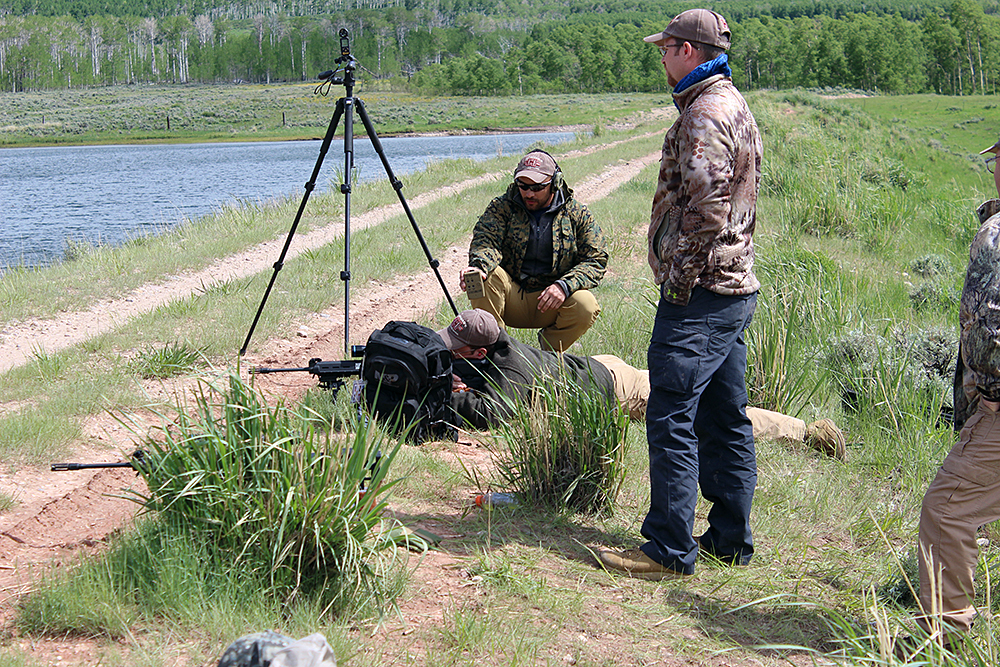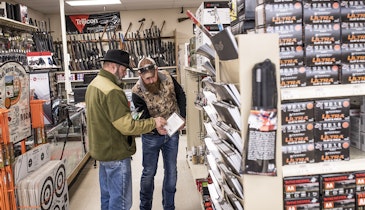The photos of a stock Smith & Wesson M&P 10 reaching out to 1,000 yards say it all...
It's almost canonical among long-range shooters: you can't really stretch out your precision at distance with anything other than a bolt gun.
Now there are those that are coming around to the idea that semi-auto AR-style gas guns can accurately reach out beyond 500 yards, but that's a die-hard minority.
And simply forget about it for long-range hunting out West. No way, no sir.
That's changed, however, with modern manufacturing and really well-made ammo. And Tactical Retailer proved it during a two-day long range shooting course sponsored by Smith & Wesson and taught by instructors with NRA Outdoors. The course is intended to help shooters from a variety of skill levels to get good at long range and make shots at reasonable Western hunting distances.
The gun we tested out was the Smith & Wesson M&P 10 LE variant, a pencil-barreled .308 with Magpul furniture. It's a tactical gun that officials with Smith say was never intended to go out beyond 800 yards at the most. But topped with a Huskemaw Blue Diamond 3-12 x 42 scope with custom turrets and firing Hornady .308 ammo, that gun can consistantly hit a game-sized target well out to 1,000 yards — and even beyond that with a skilled shooter.
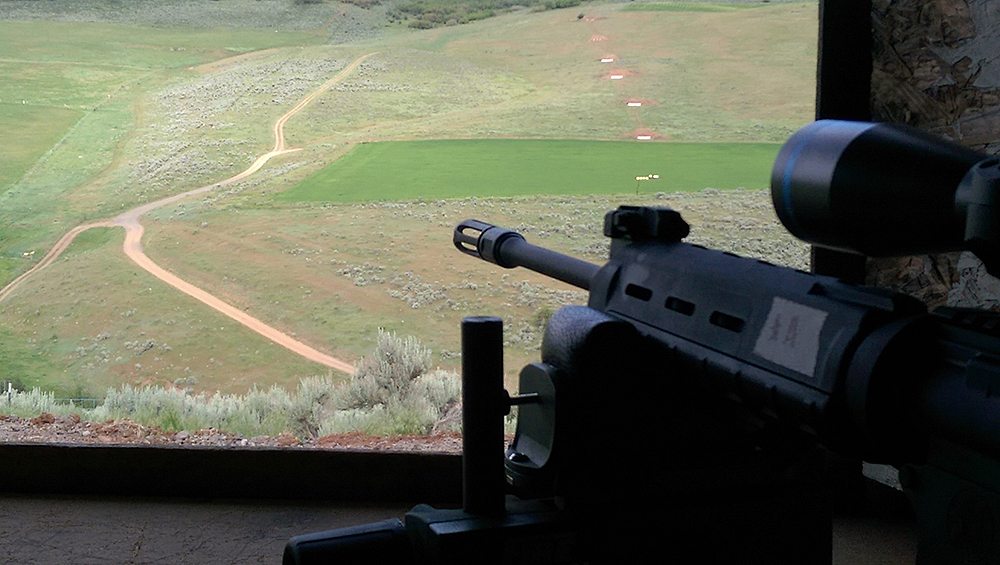
Day one was spent at a range built by SubMOA Firearms in Henefer, Utah. The range sets steel plates from 400 to 1,000 yards and is a good place to get the feel of the rifle and work on the fundamentals of the spotter/shooter relationship.
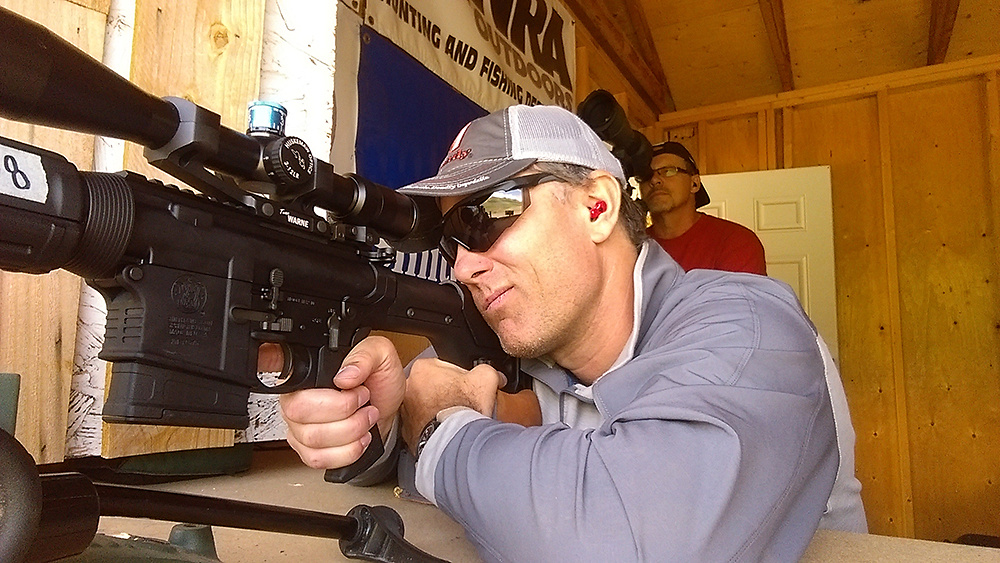
Of course, shooting from a bench is the first step in getting smart on what your rifle can do — it ensures a stable platform and allows the shooter to concentrate less on keeping the rifle still and more on communicating with the spotter. We used Caldwell Crosswind professional wind meters and our Leopold spotting scopes to call wind corrections by reading atmospheric conditions and gauging wind direction and speed on the target from reading thermals and waving grass.
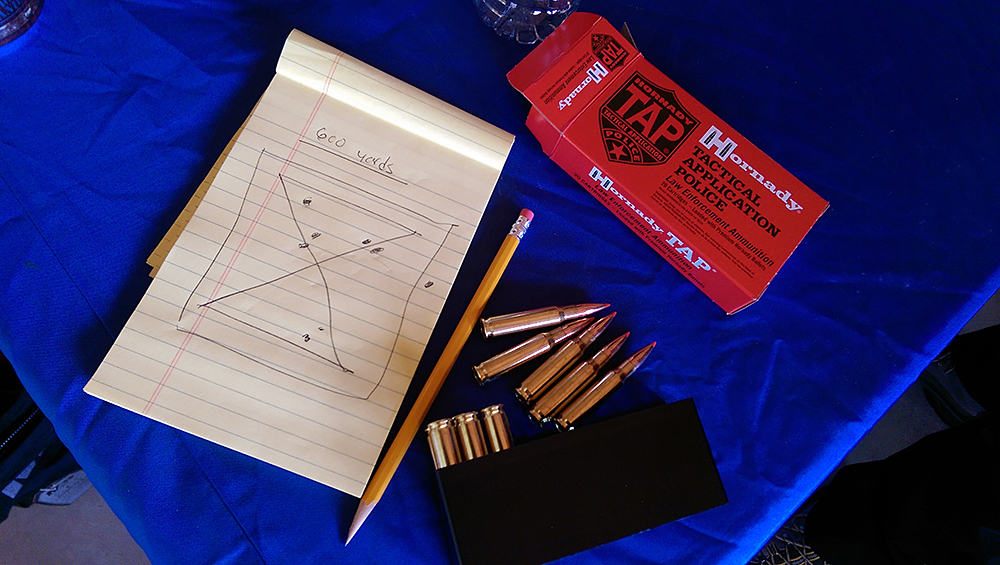
It was important for the spotter to chart where the shots were hitting in order to help the shooter correct his mistakes. As chief instructor Steve Aryan told us, consistency is key.
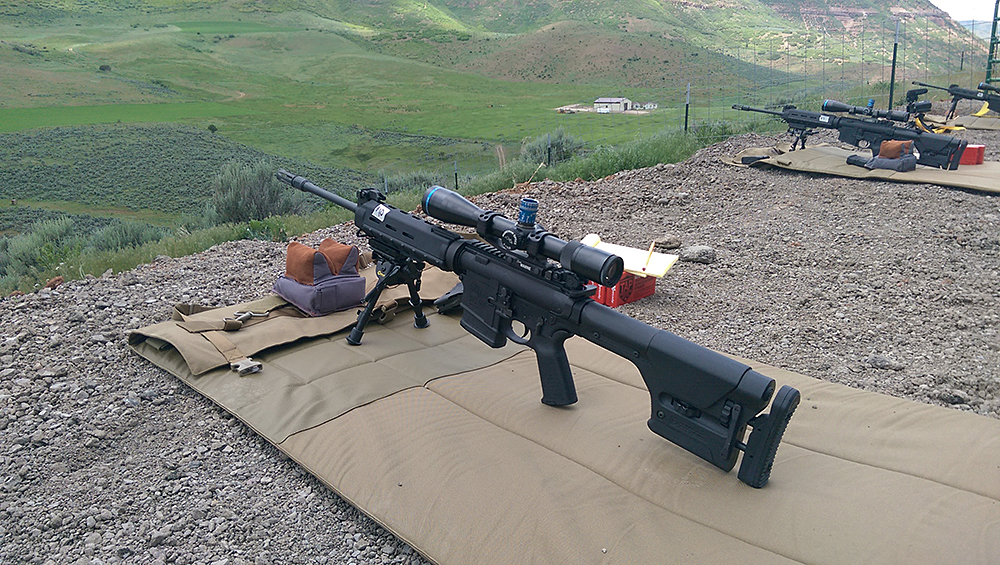
Once we had our rifles dialed on the bench and could ding the 16"x16" plates out to 1,000 yards, it was time to go outside the shoot house and try some different positions. Working with Caldwell bipods and BlackHawk! shooting mats, we learned how to "load" the bipod, position our bodies and work to keep the rifle and our breathing as stable as possible. The Magpul PRS stock could adjust quickly to the new body position as well, helping this lanky shooter get in the right place behind the optic.
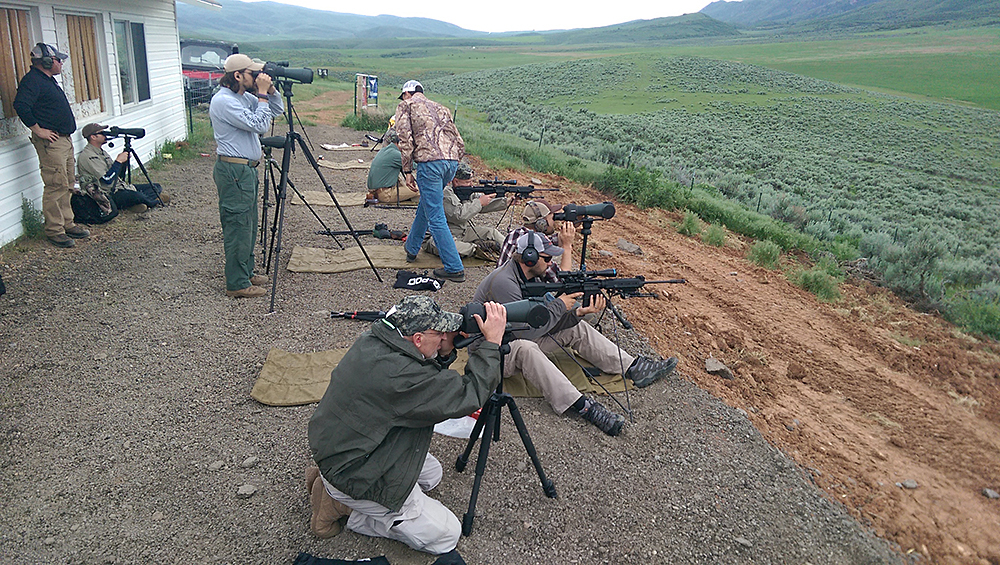
After shooting from prone, it was time to move to the sticks. We used a combination of lightweight shooting sticks and a Bog Pod tripod setup. Instructors wanted to shape the practice around what a hunter might encounter in the field engaging an elk or mule deer, and guides typically use sticks to make the most stable platform for a clean shot.
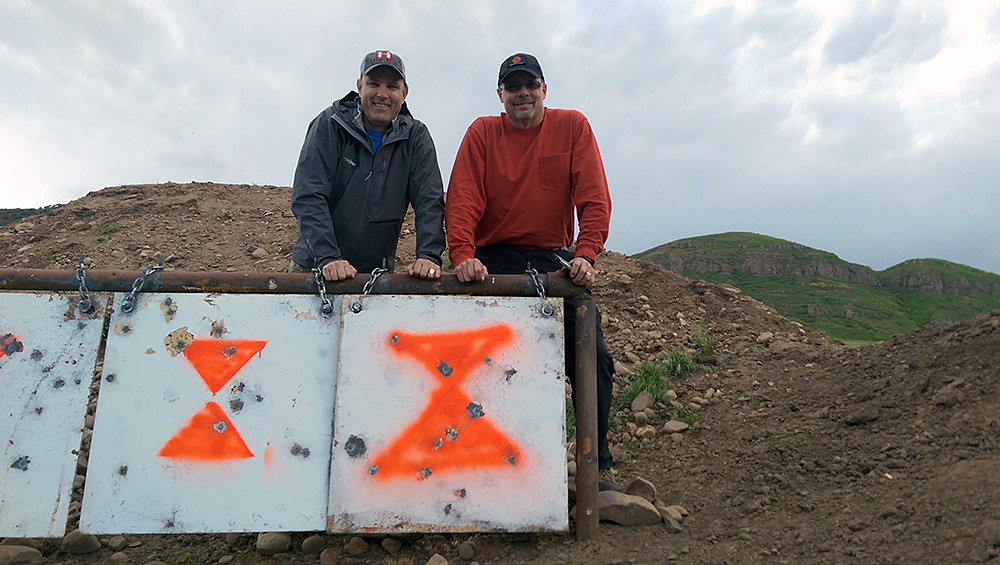
Here's proof that a stock M&P 10 can hit consistently at long ranges even with a pencil barrel and stock ammo.
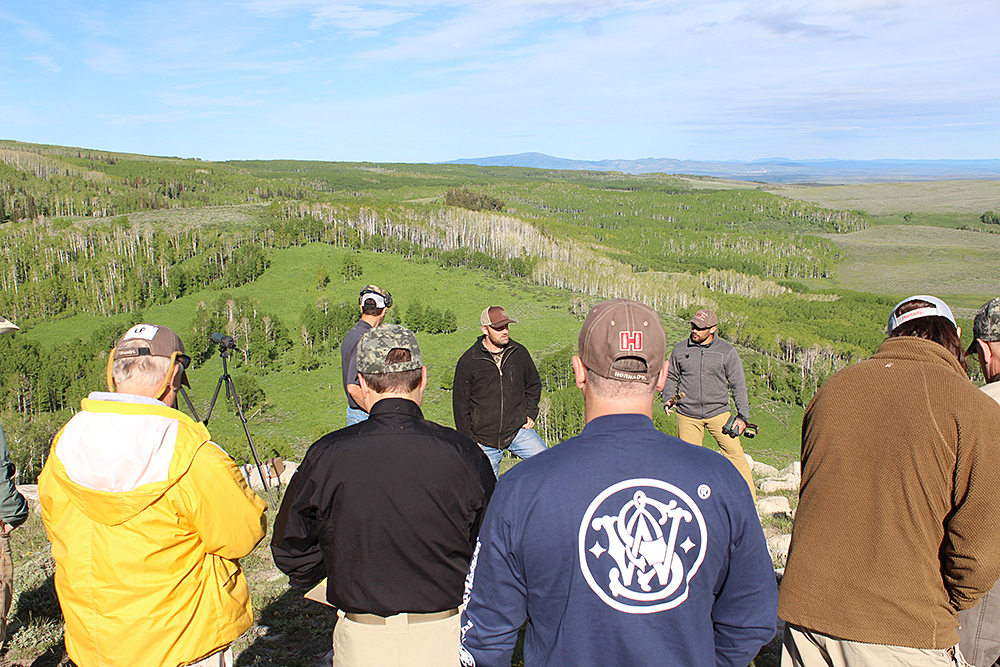
On day two we moved into the mountains of western Wyoming to truly simulate shots that a hunter might be confronted with chasing western elk or mule deer (or other game). Now we really had to factor in wind, elevation, temperature and pressure to make sure our shots were true. In these exercises, instructors limited shooters to two shots only. Spotters and shooters had to communication clearly to get a "killing" shot.
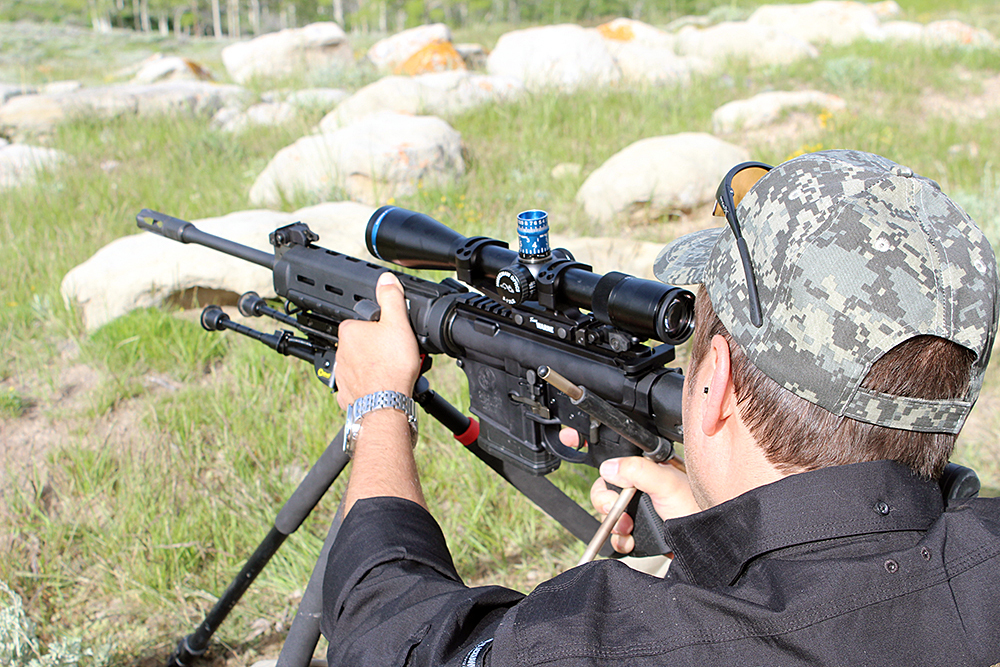
We shot from sticks in realistic positions, propped up against rocks and using packs and clothes to keep our bodies from impacting the rifle. Most shots were in the 500 - 600 yard range here.
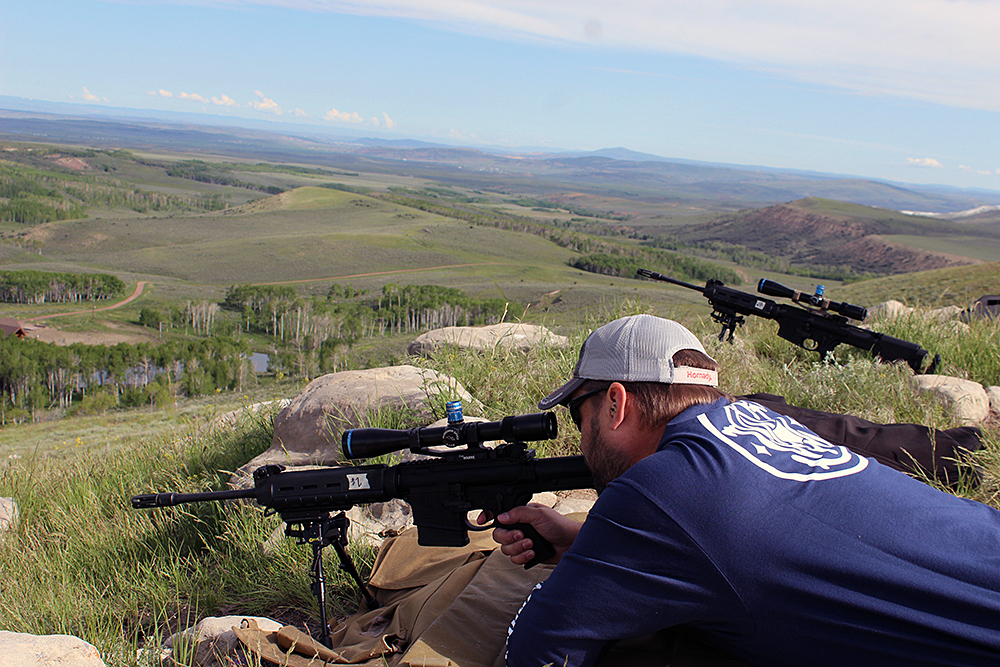
We also tried some prone shots on downward angles making sure to use what we learned the previous day to get our rifles on target on the first shot.
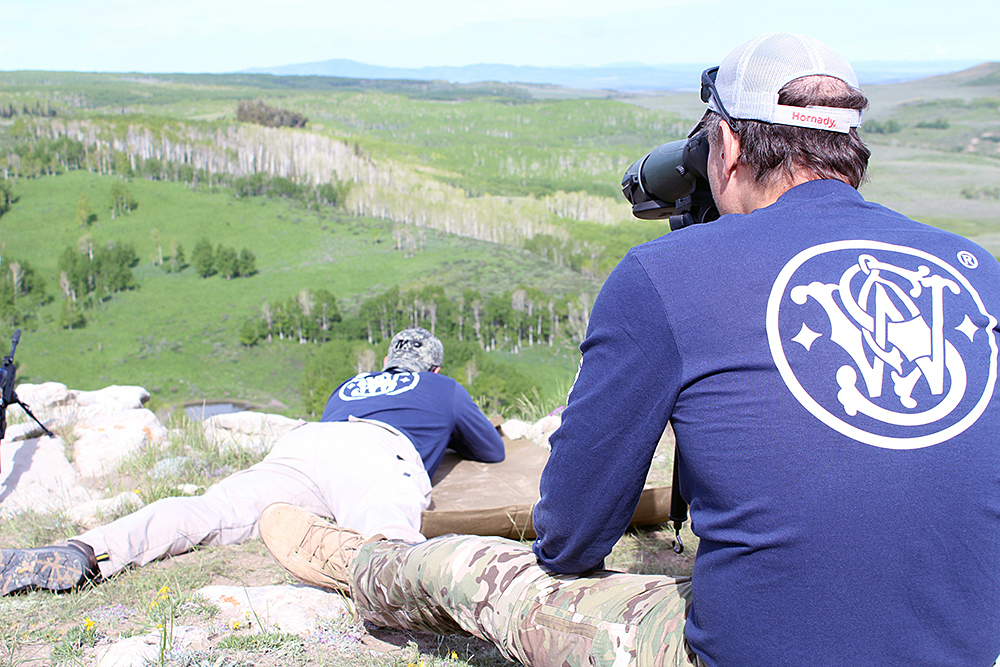
Spotter/shooter communication was even more important in field conditions. We noticed that while there was a stiff breeze coming from the right at our shooting positions, down at the target, the spotting scopes told us the air was still. "Center hold, send it!"
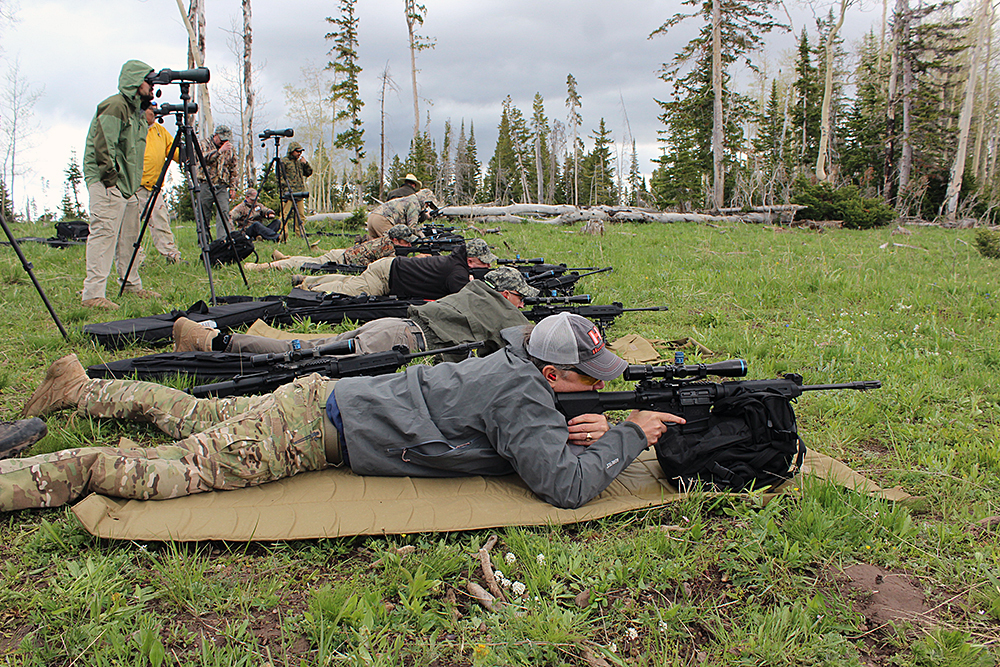
Now it was time to move to even higher ground. We took the quads to a beautiful elk hunting area near the lodge, gaining about 2,000 feet. That dropped the temperature, thinned the air and opened us up to some rain and sleet. And thank goodness for my Sitka Dewpoint jacket!
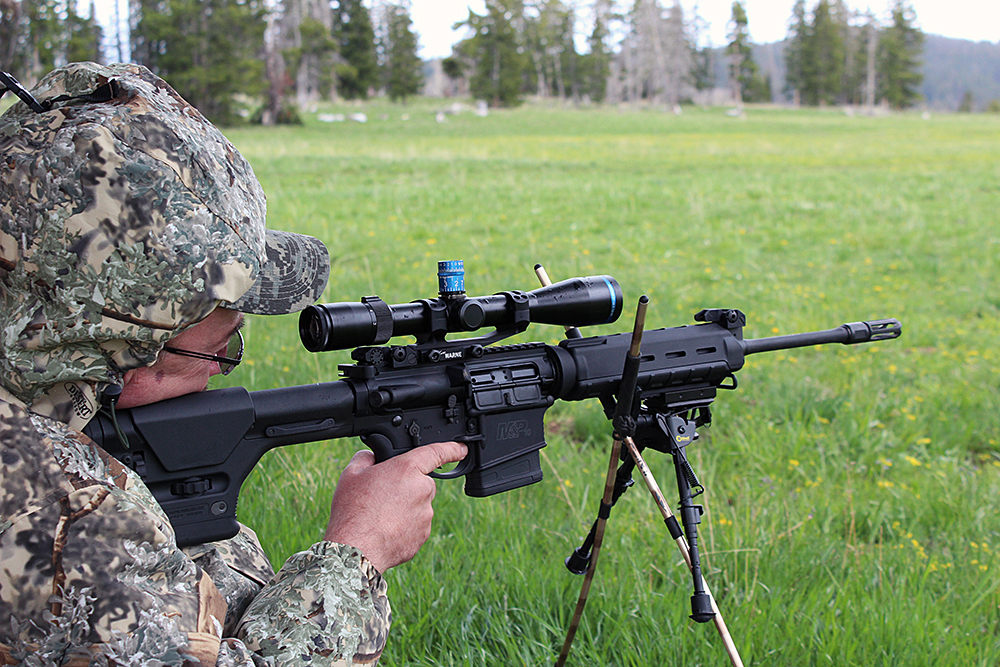
Here, shooter Mike Dickerson props himself up against a tree and takes the 600 yard shot, tensioning his bipod on the shooting sticks for a rock solid platform.
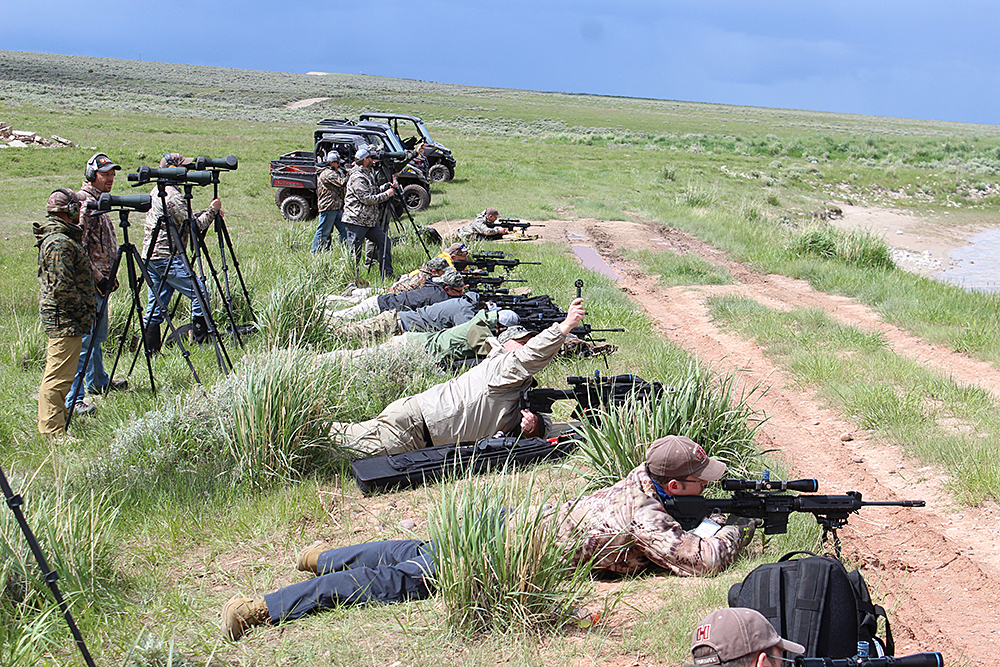
After shooting up high, it was back down to the lake, where we put all of our newfound skills to the test — not against a trophy elk but against a much more intimidating foe: ourselves!
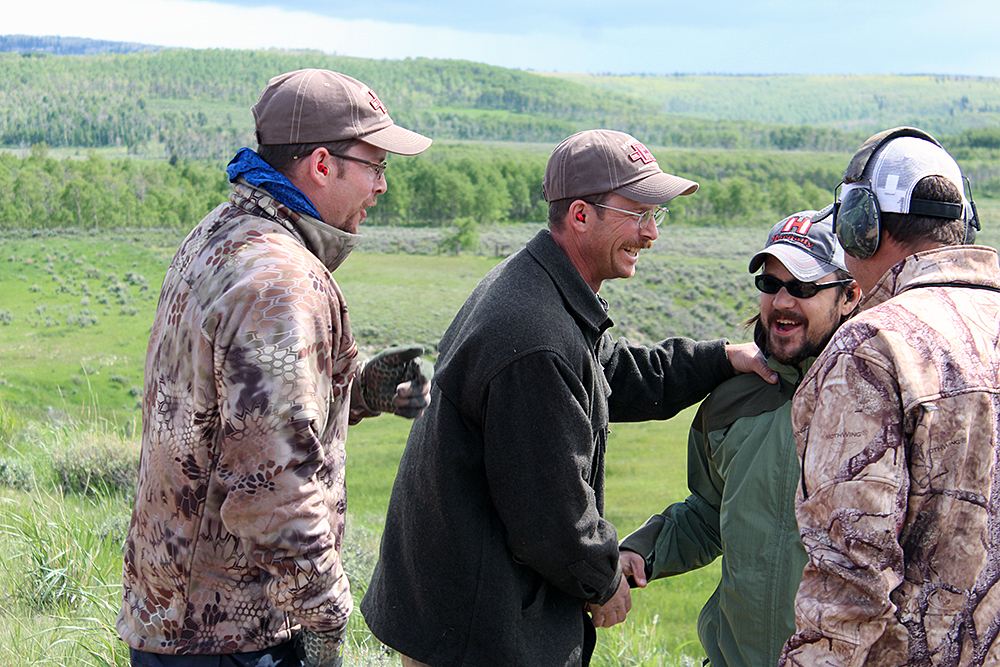
And while your intrepid Tactical Retailer editor held his own, the brothers Von Benedikt showed that experience — and the consistency that comes from it — usually wins the day.
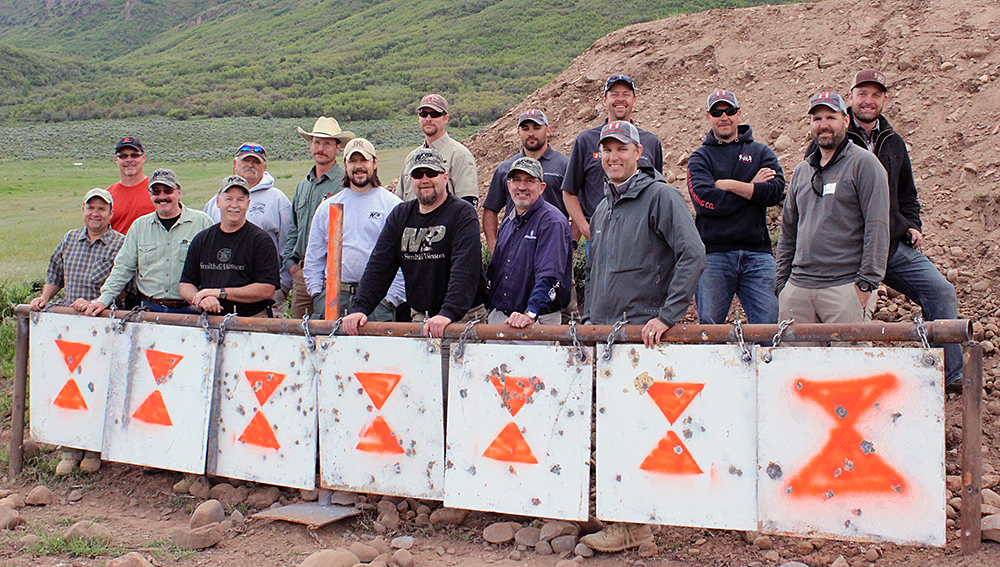
Win, lose or draw, the Long Range Shooting School put together by NRA Outdoors was a huge education not only in confidence building at long ranges, but also in the equipment that some might generally think isn't appropriate for this kind of shooting that proved the doubters wrong.

